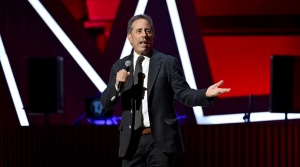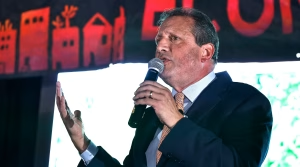Here and There
Published August 20, 2014
It is a tale
Told by an idiot, full of sound and fury
Signifying nothing.
ADVERTISEMENT
— Macbeth, Act V, Scene V
The metropolitan St. Louis region, covering all or part of 16 counties and the City of St. Louis, sprawls over about 9,000 square miles.
If you can believe it, this is almost identical to the size of the State of Israel.
Ferguson is about 6 square miles, or less than one-tenth of one percent of the overall area. And the parts of Ferguson and other surrounding municipalities directly affected by terrible recent events are even smaller.
In fact, it’s highly likely that other than reading or watching the news, or listening to the sermons and speeches offered in the aftermath, a vast percentage of those who live in the St. Louis region will not be required to have any first-person interaction with the locale where it all happened.
But if your friends and relatives in Nebraska or California or even Israel turn on CNN or visit online news sites, they might mistakenly think that St. Louis is burning down, and that you are living in perpetual fear of your life. They may have no idea that you could perform every necessary task in your daily routine without ever visiting a convenience store or apartment complex in Ferguson.
In other words, context doesn’t sell much. But for the most part, the media, particularly those from out of town, don’t really seem to care.
The inflammatory traveling circus that is the worldwide media runs from one crisis to another, showing the most incendiary pictures possible, stoking ratings, keeping viewers and readers from flipping channels or websurfing. At the end of the day, if there’s a more alarming, more viscerally grabbing story somewhere else, the mob moves on.
ADVERTISEMENT
Does that sound familiar? Perhaps akin to the coverage of the Israel-Gaza conflict? How many pictures or videos from Gaza have you seen lead off the telecast or headline the front page, with smoke billowing above the urban Gaza City landscape?
Contrast that with how few pictures you see of rockets fired into southern Israel, or of the destruction wrought on the houses or communities where they land. Those “tiny” assaults — now in the thousands upon thousands — don’t tell as monumental a visual story as the big booms from Israel’s retaliatory self-defense, so they are either relegated to the back or dumped altogether.
And have you noticed how the headlines about Gaza rapidly dissipate from the front pages of international media when the parties sit not behind a mortar but at a negotiating table? After all, where’s the fun in that?
It’s the same here. Think about how often the national media has seized on those moments in Ferguson when tear gas has been deployed, or gunshots have issued. And even among the many vigils and peaceable rallies, which ring loudest? Those at which the voices are loudest and most histrionic, of course.
That’s the way the story gets told. Bad, loud and irate sells. It’s all about the noise. And with few exceptions, the farther the news source is from the locality involved, the worse and less nuanced it gets.
Reading the St. Louis Post-Dispatch, for instance, is going to give you a much more sophisticated reading of the situation than watching CNN. Our colleagues at the Post (we use them as a far better example than the local TV outlets, which still engage the visual image disproportionately to verbal depth) have done a very strong job of looking at the incident as it sits within the fabric of St. Louis history and culture, for better or worse.
Similarly, examining the Jerusalem Post, Haaretz or the Times of Israel — at least if you’re interested in the impact of the Gaza conflict upon Israel, or how the conflict might fit within the long-term narrative — is a far more worthy exercise than trying to understand things in any depth from those who swoop in, shoot their film and swoop out.
As media ourselves, we get and support the need to report immediacy, it’s essential and professional. But when it becomes detached from the backdrop of reality, a picture can emerge that’s way inaccurate as best, and highly skewed at worst.
By all means, let’s have a community discussion about race relations, about police conduct, about mistreatment of minorities, about the need for longterm social justice and respect for all. Let’s talk about what we each can do (see Ellen Futterman’s News and Schmooze on p. 2). It’s needed and in fact, is needed on an ongoing, insistent basis, regardless of the tragedy that surrounds Michael Brown’s death.
But for heaven’s sake, let’s take these stories, and what they mean, seriously. Not as the equivalent of reality TV, not as the flaming eye candy of the day, but as object lessons for how we can together strive to make our community one of which we can all be proud.















